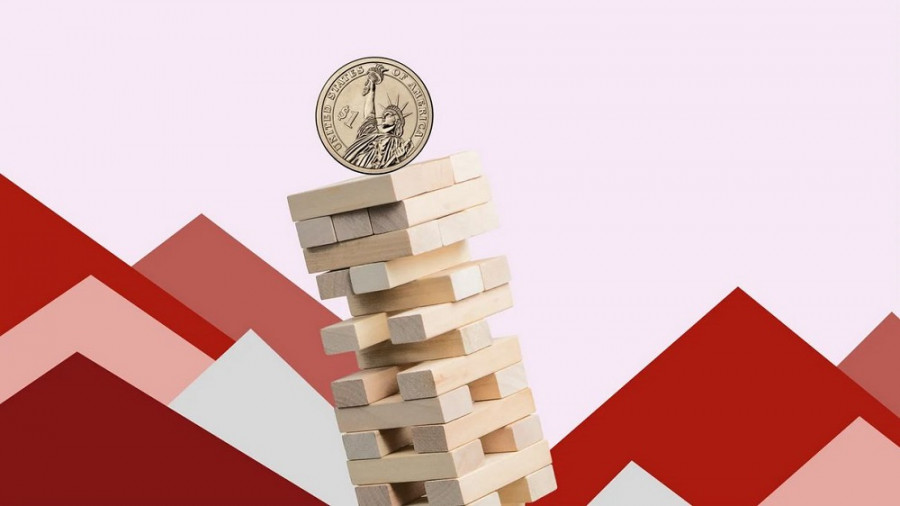At the end of the past week, the US dollar came under significant pressure due to weak Nonfarm Payrolls and weak ISM data. The US Dollar Index fell to 104.54, its lowest level since June 12. As a result, the EUR/USD pair hit a three-week high, settling within the 1.08 level. Early signs of a trend reversal have appeared.

However, the upcoming week's events could reshape the fundamental picture for the EUR/USD pair. If the US inflation data for June does not confirm May's trends, EUR/USD buyers will find it difficult to sustain the bullish progress. If Federal Reserve Chief Jerome Powell, speaking in Congress, does not confirm the central bank's intentions to lower rates in September, the greenback could regain its strength. In the event of a "perfect storm" (accelerating inflation + hawkish stance from Powell), we could witness a dollar rally. Although the baseline forecast scenario suggests further weakness for the greenback, the aforementioned risks should not be ignored.
On Tuesday, July 9, Powell will begin his two-day testimony in the US Congress. He will first present the semi-annual monetary policy report to the Senate Committee on Banking, Housing, and Urban Affairs, and the next day (i.e., Wednesday), to the House Committee on Financial Services. Given the fundamental importance of this event, neither EUR/USD bulls or bears are likely to take big positions for or against the greenback ahead of this testimony.
As a reminder, Powell already expressed his position last week while speaking at an economic forum in Sintra, Portugal. He said that inflation in the US is gradually slowing down but did not announce a rate cut. According to him, the Fed needs more data before cutting interest rates. The Fed chair's testimony in Congress will take place before the key inflation reports for June are released. However, he may comment on the June Nonfarm Payrolls, which reflected a slowdown in the growth rate of average hourly earnings (3.9% - the weakest growth rate since May 2021). In addition, the data on job additions for May and April were revised downwards by a total of 111,000. If Powell does not soften his stance (compared to his speech in Sintra) in light of such figures, the dollar might receive some support.
But inflation could be the real lifeline for the greenback. On Thursday, July 11, one of the key inflation indicators – the Consumer Price Index (CPI) – will be released in the US. On a monthly basis, the CPI might come in at 0.1%, after showing no growth in May. On an annual basis, analysts expect the indicator to slow down to 3.1%. The annual CPI was at 3.3% in May, at 3.4% in April, and at 3.5% in March. If the index comes in at the forecasted level, we can certainly confirm a downward trend. The core CPI, excluding food and energy prices, is expected to remain at the previous month's level (0.2%) on a monthly basis. On an annual basis, it is expected to remain stagnant: the forecast indicates that the indicator will remain at 3.4%.
However, if the indicators accelerate contrary to forecasts, the dollar might find itself "back in the saddle" as the prospects of a rate cut in September would be called into question.
The following day, July 12, another significant inflation indicator will be released: the Producer Price Index (PPI). The index for June is expected to come in at 2.2% year-over-year, the same as the previous month. However, the core PPI is anticipated to accelerate to 2.5%, after falling to 2.3%.
A "green tint" in the inflation reports could save the US dollar from falling further. The market will once again be plagued by doubts regarding the prospects of a rate cut in September. And here, "[when] in doubt, rule for the accused". In our case, the "accused" is the greenback, which can still recover and regain lost positions.
In addition to Powell's speech, other Fed representatives will also speak in the upcoming week. On Tuesday, Board of Governors members Michael Barr and Michelle Bowman will speak; on Wednesday, Chicago Fed President Austan Goolsbee; on Thursday, Atlanta Fed President Raphael Bostic, St. Louis Fed President James Bullard, and Board of Governors member Lisa Cook. Their rhetoric could strengthen or weaken the dollar's position, depending on how they assess the latest economic reports.
The euro awaits the results of the second round of parliamentary elections in France. The official results will be announced on Monday, while unofficial results will be available on Sunday evening.
The most negative result for the euro would be if Marine Le Pen's far-right political force, the "National Rally," were to secure 289 seats in parliament, thereby gaining an absolute majority. In such a case, the single currency could come under significant pressure. However, this scenario is unlikely. The right's chances of victory have decreased after more than 200 candidates from the left-wing "New People's Front" and the centrist alliance of Emmanuel Macron withdrew from the elections. Experts believe this move has consolidated the votes against Le Pen. According to the latest polls, the "National Rally" could secure between 170 and 210 seats. In this case, the euro would remain relatively unaffected by the French elections. However, if Le Pen secures 250 or more seats, market participants may become anxious as the right could attempt to form a minority government with their allies.
If the elections conclude as predicted, the fate of EUR/USD will be in the hands of Powell and inflation data. By the end of the upcoming week, the pair will either return to the range of 1.0650-1.0750 or consolidate in the 1.0900 area, paving the way towards the key barrier of 1.1000.
The material has been provided by InstaForex Company - www.instaforex.comfrom Forex analysis review https://ift.tt/zfbmTg2
via IFTTT
